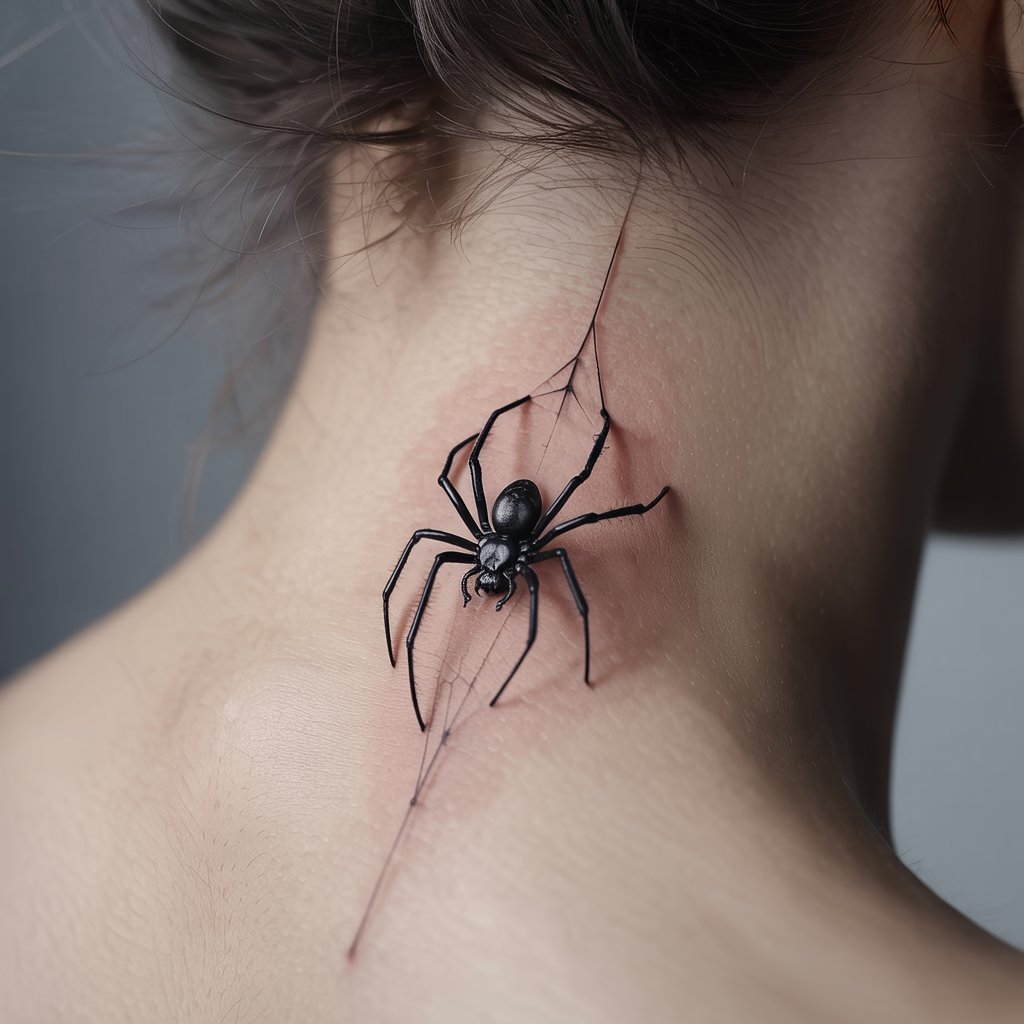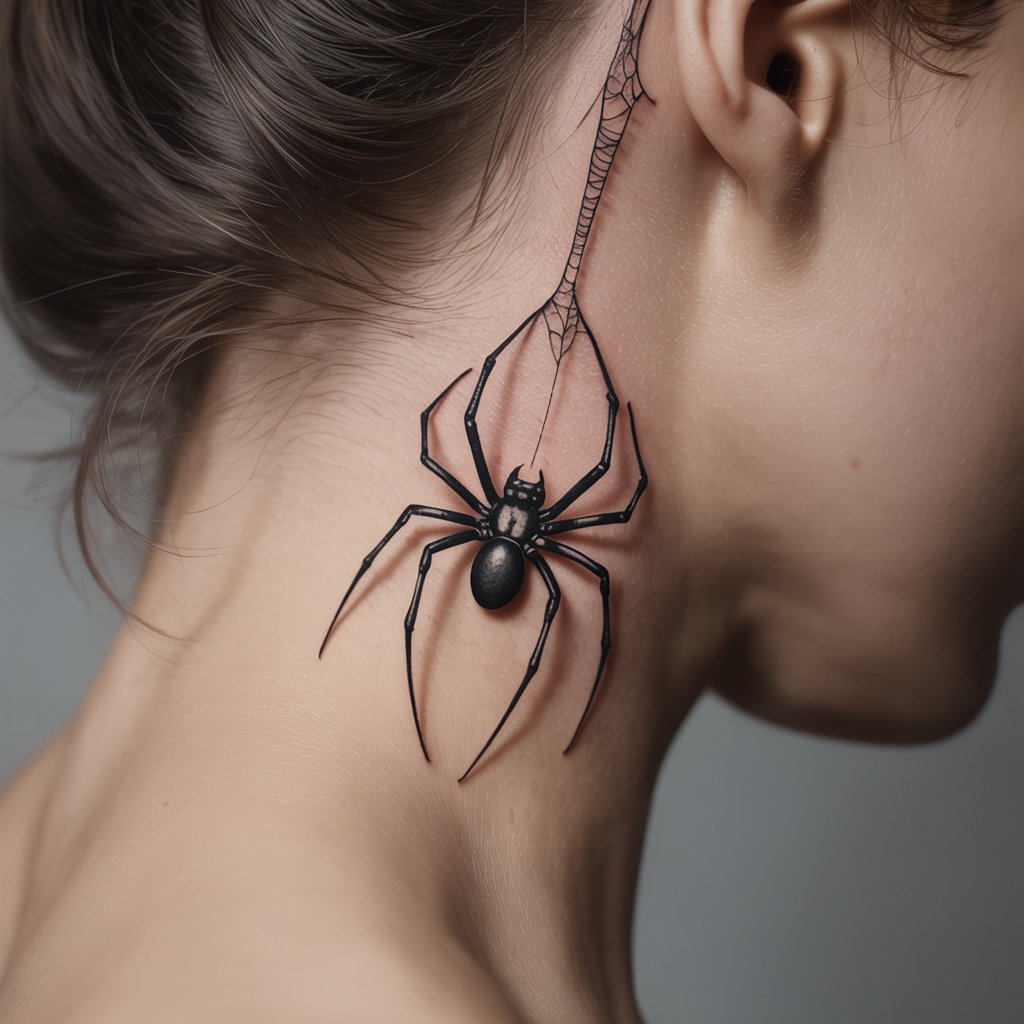In the ever-evolving world of tattoo artistry, few styles capture attention quite like hyper-realistic 3D tattoos. These remarkable pieces of body art create stunning visual illusions, making it appear as though objects—or in some striking cases, creatures—are sitting directly on the skin rather than inked into it. The spider designs featured in our gallery represent the pinnacle of this artistic approach, demonstrating how tattoos can transcend traditional boundaries to create truly immersive visual experiences.
Creating the Perfect Illusion
What separates extraordinary 3D tattoos from conventional designs is the masterful application of artistic techniques that trick the eye:
Precise Shadowing
The illusion of three-dimensionality relies heavily on perfect shadow work. Artists must understand exactly how light would interact with a real object on the skin, creating shadows that fall in anatomically correct directions. Notice how the spiders appear to cast subtle shadows on the skin beneath them, enhancing the perception that they’re perched on the surface rather than tattooed into it.
Meticulous Detail
The level of detail in these pieces is astounding—from the texture of the spider’s abdomen to the precise articulation of each leg joint. This microscopic attention to anatomical accuracy contributes significantly to the realism. The artists must possess both technical tattooing skills and deep knowledge of arachnid anatomy to achieve such lifelike results.
Strategic Placement
Placement plays a crucial role in selling the illusion. The neck and behind-the-ear locations showcase these spider designs perfectly, as these areas provide natural contours and movement that enhance the three-dimensional effect. When the wearer turns their head, the spider appears to shift slightly, further reinforcing the illusion of a separate entity perched on the skin.
The Psychology Behind the Fascination
The visceral reaction many people have to these tattoos reveals something fascinating about human psychology. 3D spider tattoos operate in a unique space between attraction and discomfort:
The Uncanny Valley Effect
These tattoos intentionally play with what psychologists call the “uncanny valley”—the cognitive dissonance we experience when something appears almost, but not quite, real. The brain momentarily struggles to categorize what it’s seeing, creating a split-second of uncertainty that captures attention and creates a memorable visual impact.
Embracing the Controversial
Choosing such a design often represents a deliberate embrace of imagery that many find unsettling. Spider tattoos, particularly those rendered with such shocking realism, make a bold statement about the wearer’s comfort with challenging conventional aesthetics and their appreciation for nature’s more misunderstood creatures.
Conversation Pieces
Beyond their artistic merit, these tattoos serve as powerful social catalysts. Few designs can spark conversation as immediately as a hyper-realistic spider appearing to crawl across someone’s neck. There’s an undeniable performance aspect to wearing such a tattoo—the reactions it provokes become part of the experience of having it.

Technical Mastery Required
The creation of convincing 3D tattoos requires specialized skills beyond those needed for traditional tattooing:
Advanced Contrast Techniques
Artists must master the manipulation of black and gray tones to create the illusion of light reflecting off a three-dimensional object. The most successful pieces use stark contrasts between deep blacks, perfect grays, and strategic highlights to create the perception of depth.
Single-Needle Precision
Many details in these spider tattoos are created using single-needle techniques that allow for extraordinarily fine line work. The delicate webbing connecting the spider to the ear, for instance, requires steady hands and precise machine control that only comes with years of dedicated practice.
Adaptability to Skin Dynamics
Perhaps most challenging is creating an illusion that maintains its effect as the skin moves. The artist must anticipate how the tattoo will look when the neck turns or the skin stretches, ensuring the 3D effect remains convincing from multiple angles and during movement.
Beyond the Aesthetic: Symbolism and Meaning
While the visual impact of these tattoos is immediate, many wearers choose spider imagery for its rich symbolic associations:
Creation and Artistry
Across many cultures, spiders represent creativity and craftsmanship through their ability to weave intricate webs. The tattoo becomes a meta-statement about artistic creation itself—the tattoo artist, like the spider, creating something both beautiful and technically complex.
Patience and Strategy
Spiders are nature’s patient hunters, crafting their webs and waiting for the perfect moment. This symbolism resonates with those who value strategic thinking and patience in their own lives.
Feminine Power
In numerous mythological traditions, spiders connect to feminine energy and power. From Arachne in Greek mythology to Spider Woman in Native American traditions, these creatures often represent feminine wisdom, protection, and the weaving of fate.
Finding the Right Artist
For those inspired by these remarkable designs, finding the right artist is crucial:
- Look specifically for portfolios featuring successful 3D work
- Seek artists with backgrounds in fine art drawing or painting
- Expect to invest significantly more time and money than for conventional tattoos
- Be prepared for longer, more detailed sessions to achieve the necessary level of realism
The most successful 3D tattoo artists often have waiting lists extending months or even years, reflecting the specialized nature of this skill set.
A Living Art Form
As tattoo technologies and techniques continue to evolve, we can expect even more astonishing developments in the realm of 3D tattooing. What remains constant is the powerful impact these designs have—transforming the body into a canvas for illusions that challenge perception and blur the line between art and reality.
Whether you find these spider tattoos fascinating, unsettling, or both, their technical brilliance and visual impact are undeniable. They represent tattoo artistry pushed to its limits, creating experiences rather than merely images—living illusions that continue to fascinate long after the initial ink has dried.


